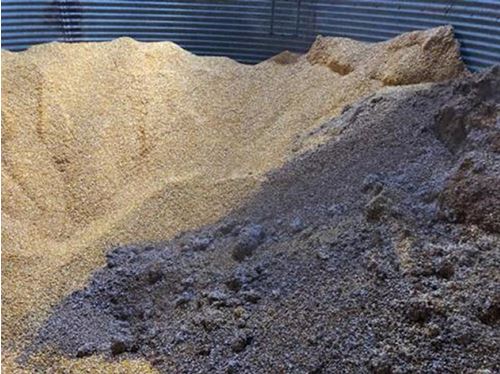Brought to you by: Jonah T. Johnson, MS, CPAg, CCA - Sales Agronomist, PCT | Sunrise
January 15, 2020: Is your grain in the bin going out of condition?
Happy New Year! I hope you all had a Merry Christmas and are looking forward to a better year in 2020!
As we reflect on the 2019 harvest season, I think we can all attest that harvest was delayed in most areas when coupled with unfavorable weather. In many cases, grain was harvested with higher moisture (and probably lower test weight and grain quality) with urgency to complete a timely harvest. Higher moisture grain needs to be dried (15% for corn and 13% for soybeans) and cooled (below 35-40 degrees) to prevent grain spoilage.
If these storage parameters were not achieved, please be aware that you could experience unfavorable “hot spots” within the bin that can spoil grain and lead to mold production.
Erratic differences between day and nighttime temperatures mixed with intense solar heating can drastically change the condition within the storage bin. Coring the bin may be warranted to remove grain “fines” which are a usually a result of poor grain quality. These small grain particulates do not allow for proper air circulation, hence creating unwanted temperature swings within the bin.
Iowa State University published a great article discussing proper grain storage below:
Many producers put grain into their storage bins last fall at higher moisture contents than normal, due to late crop maturity and less in-field drying in 2019.
For grain stored wetter than recommended for storage through the winter months (above 15% for corn and 13% for soybeans), it is especially vital to monitor grain this winter to get ahead of situations that could cause a loss in condition.

Figure 1. Mold developing in corn on a south-facing wall in winter, likely due to solar heating.
Even after cooling, grain can warm in storage bins in the winter by solar heating on the bin roof and south-facing walls (Figure 1).
It is important to remember that the time required to fully aerate a bin (to cool grain and even out grain temperatures) depends on the fan size, or airflow. A small aeration fan (0.1 cfm/bushel) can take nearly a week to fully cool a bin of corn. Determine how long to run your aeration fan in this ICM blog post. It's better to run the fan too long to prevent uneven grain temperatures, than not long enough. Run aeration cycles when the averages between the daily high and low temperatures are near 30-35 degrees.
This winter, as you are monitoring grain condition weekly and aerating as needed, be sure to inspect and probe the grain for crusting, damp spots, and warm spots. Smell the first flush of exhaust air after turning on the fan to notice any off-smelling odors that indicate molding (musty or sour).
The first flush of air exits the grain within seconds for a large drying fan and within minutes for an aeration fan. Have a plan of action and move grain at the first sign of it going out of condition. Remember that grain above safe storage moisture content will have to be dried or marketed prior to warm temperatures returning in spring.
Producers should also be aware that low test weight corn and or low-quality grain will have a shorter allowable storage time than good quality grain (refer to recent ICM blog post). Corn with a test weight below 53 lbs/bushel may only have about half the effective storage life of 56 lbs/bushel corn. It is not advised to store grain longer than half of its allowable storage time to reduce the risk of quality loss before marketing.
Reference: Iowa State University “Integrated Crop Management” Blog
https://crops.extension.iastate.edu/blog/kristina-tebockhorst-shawn-shouse/your-grain-bin-going-out-condition